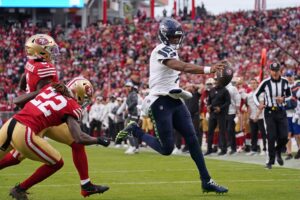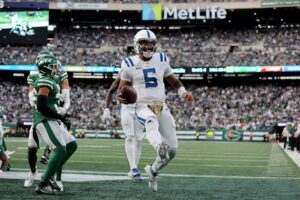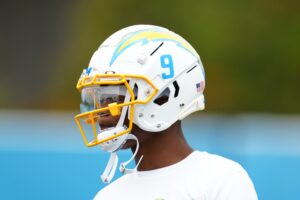The Cleveland Browns didn’t own a first-round pick in the 2019 NFL Draft, but they still managed to end up with an elite talent when they selected LSU cornerback Greedy Williams 46th overall in the second round. Many expected he would start opposite of Denzel Ward right away and give the Browns a lockdown duo at corner. But there are reasons why Williams slid to middle of the second round, and he shouldn’t just be handed a starting role.
When Should the Cleveland Browns Start Greedy Williams?
Cleveland’s secondary was much improved in 2018 as compared to the previous season, thanks to a few key off-season additions. Ward was a surprise pick at number four overall, but he lived up to his draft billing by making the Pro Bowl. Former Kansas City Chief Terrance Mitchell was a great complement to Ward before suffering an injury midway through the season. T.J. Carrie, another free agent signing, was solid in the slot, and although inconsistent on the outside, he shut down Julio Jones when the two faced off against each other. And Damarious Randall, acquired through trade from the Green Bay Packers, was moved back to his natural position of free safety and was one of the NFL’s best centerfielders.
Still, a team can never have too many good defensive backs, and Dorsey couldn’t pass up the chance to take Williams. At 6’2″ and boasting 4.37 speed, Williams has the physical profile of a prototype NFL cornerback. In college, Williams was elite in man coverage, even locking down D.K. Metcalf last season.
But Williams was not a perfect prospect. Far from it. He wasn’t great in zone coverage, which Browns’ defensive coordinator Steve Wilks likes to run. And perhaps his biggest issue was his tackling effort or lack thereof. It’s clear on film he doesn’t like to seek out contact in run support, and his technique is also very poor. No matter how good Williams is in coverage, it will be hard for him to carve out a role on Cleveland’s defense if he’s a liability against the run.
When head coach Freddie Kitchens talked to Williams on draft night after the team had selected him, he told the rookie that he would have to tackle when he got to Cleveland. Kitchens later reinforced the point, saying he “wasn’t joking”. Kitchens doesn’t tolerate a lack of effort, so Williams won’t see much playing time until he proves he can tackle well.
While Kitchens sees Williams’ tackling effort as a big deal, it seems that general manager John Dorsey disagrees. Dorsey was quoted as saying that “corners are paid to cover”. And while this is true, if your corners can’t tackle, offenses just won’t throw the ball. They’ll run the ball outside and win the game.
Dorsey and Kitchens have a great working relationship, but the Williams situation could become a point of tension. Dorsey doesn’t have the final say over which players see the field on Sunday, only those which make up the roster. We saw this last season when Dorsey traded starting running back Carlos Hyde in order to force then-head coach Hue Jackson to play rookie Nick Chubb. Hopefully, a trade isn’t needed to get Williams on the field.
So to answer the question; Williams should start when he proves he won’t have any issues in run support. But that’s easier said than done. Physicality is a mindset, and a mindset is the hardest thing to change.






